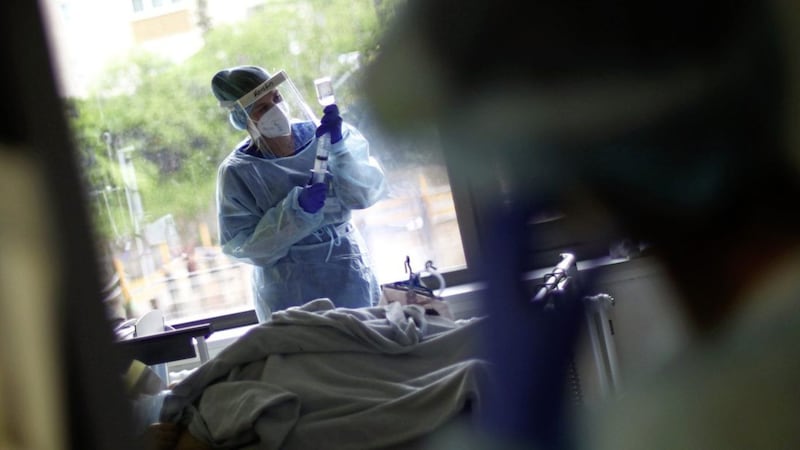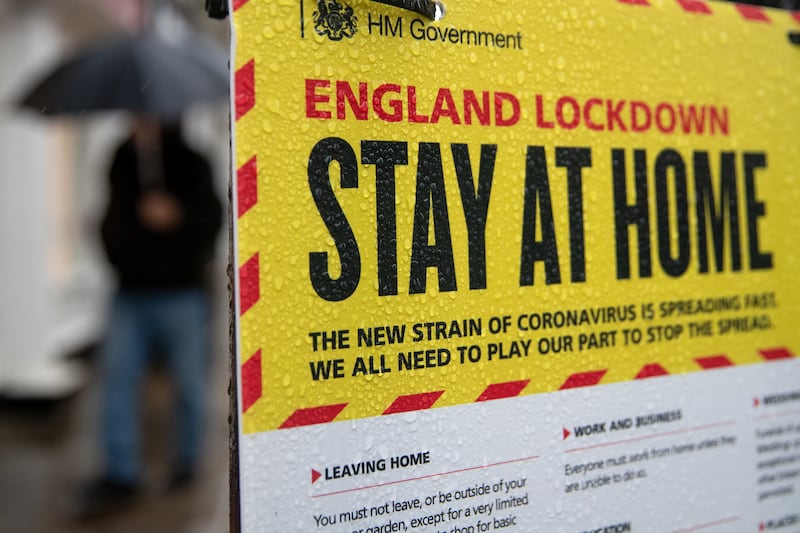COVID-19 related death rates have been highest in the most deprived areas of Northern Ireland, according to government statistics.
The Northern Ireland Statistics and Research Agency (Nisra) has published data on the 875 coronavirus deaths in the last six months and found - despite much of the period covered by stringent lockdown restrictions - it accounted for 10.9 per cent of all fatalities.
In the north's most deprived areas there have been 66 deaths per 100,000 population compared with 55.2 per 100,000 persons for the region as a whole, with the highest Covid-19 related deaths in urban areas (66.9 deaths per 100,000 population).
This compares with 43.3 deaths per 100,000 population in mixed urban/rural and 36.3 deaths per 100,000 population rural areas.
Men had a "significantly higher "rate of death linked to Covid-19 - 69.9 deaths per 100,000 of the male population, with women seeing 45.8 deaths per 100,000.
Of the 11.7 per cent of deaths accounted for by people of working age (20-69), 39.2 per cent were in the `skilled trades, elementary occupations or process, plant and machine operative occupational groups'.
The findings come just days after leading medical journal The Lancet published an article calling for the outbreak to be recognised as a `syndemic' rather than a pandemic because it disproportionately affects those with underlying conditions "clustering within social groups according to patterns of inequality deeply embedded in our societies".
Syndemics are where biological and social factors increase a person's likelihood of harm or worse health outcomes
Editor-in-chief Richard Horton said "the aggregation of these diseases on a background of social and economic disparity exacerbates the adverse effects of each separate disease".
"The most important consequence of seeing Covid-19 as a syndemic is to underline its social origins.
"The vulnerability of older citizens; Black, Asian, and minority ethnic communities; and key workers who are commonly poorly paid with fewer welfare protections points to a truth so far barely acknowledged - namely, that no matter how effective a treatment or protective a vaccine, the pursuit of a purely biomedical solution to Covid-19 will fail.
"Unless governments devise policies and programmes to reverse profound disparities, our societies will never be truly Covid-19 secure."
Proportions of Covid-19 related deaths in Northern Ireland by country of birth "are in line with proportions from the Northern Ireland Census in 2011", with 90.3 per cent of people born in the region.
The Nisra figures confirmed Belfast council area had the highest Covid-19 related deaths with 90 deaths per 100,000, followed by the neighbouring Antrim and Newtownabbey at 73.1 per 100,000.
Fermanagh and Omagh had the lowest deaths with 17.2 per 100,000, with neighbouring Derry and Strabane next lowest with 27 per 100,000 - a stark contrast to the recent spike in infections which are causing concerns in the area.
The monthly deaths fell to their lowest in August - 1.9 for men and 0.6 for women - after peaking at 36.7 and 23.4 respectively in April.








